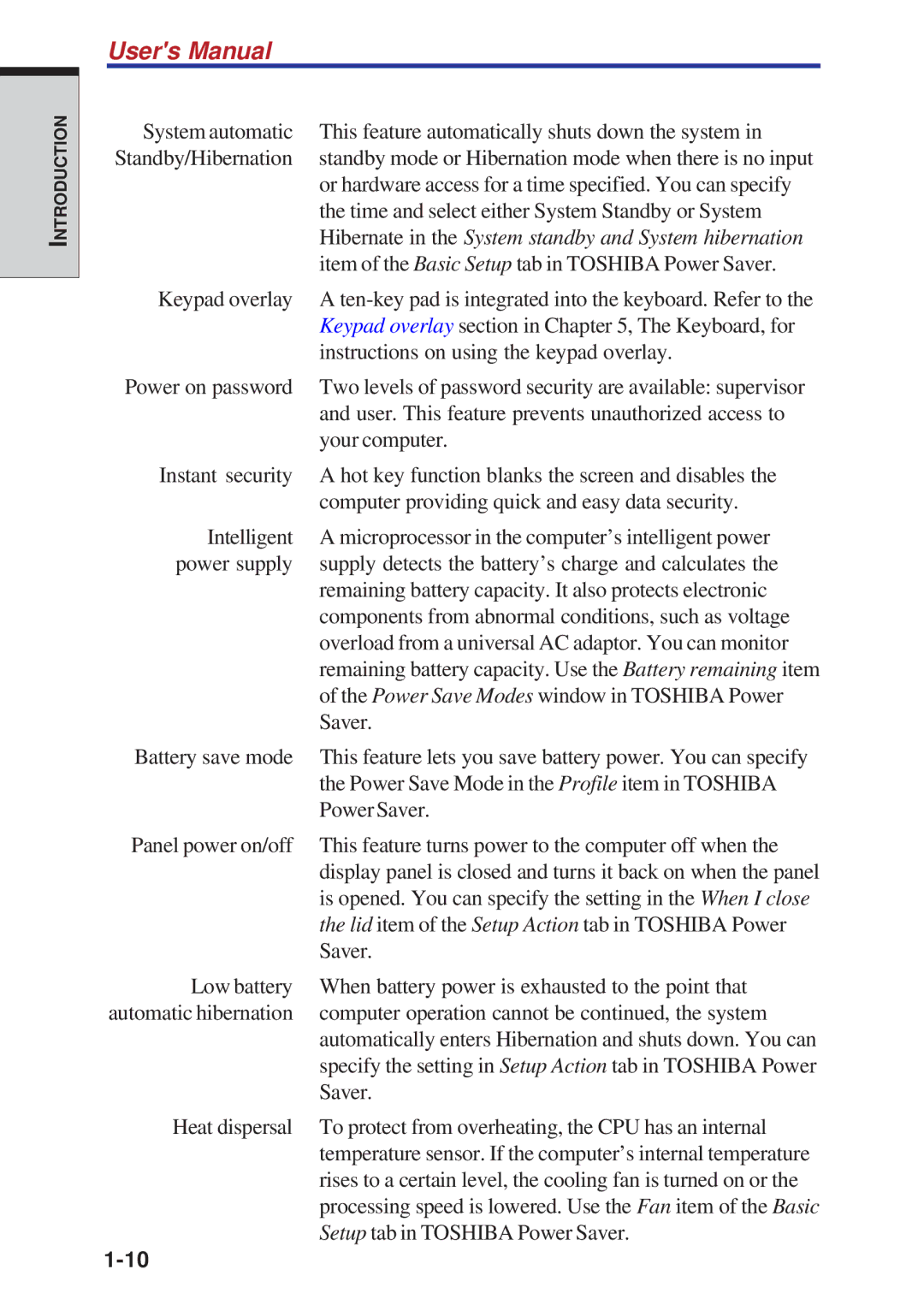
INTRODUCTION
User's Manual
System automatic | This feature automatically shuts down the system in |
Standby/Hibernation | standby mode or Hibernation mode when there is no input |
| or hardware access for a time specified. You can specify |
| the time and select either System Standby or System |
| Hibernate in the System standby and System hibernation |
| item of the Basic Setup tab in TOSHIBA Power Saver. |
Keypad overlay | A |
| Keypad overlay section in Chapter 5, The Keyboard, for |
| instructions on using the keypad overlay. |
Power on password | Two levels of password security are available: supervisor |
| and user. This feature prevents unauthorized access to |
| your computer. |
Instant security | A hot key function blanks the screen and disables the |
| computer providing quick and easy data security. |
Intelligent | A microprocessor in the computer’s intelligent power |
power supply | supply detects the battery’s charge and calculates the |
| remaining battery capacity. It also protects electronic |
| components from abnormal conditions, such as voltage |
| overload from a universal AC adaptor. You can monitor |
| remaining battery capacity. Use the Battery remaining item |
| of the Power Save Modes window in TOSHIBA Power |
| Saver. |
Battery save mode | This feature lets you save battery power. You can specify |
| the Power Save Mode in the Profile item in TOSHIBA |
| PowerSaver. |
Panel power on/off | This feature turns power to the computer off when the |
| display panel is closed and turns it back on when the panel |
| is opened. You can specify the setting in the When I close |
| the lid item of the Setup Action tab in TOSHIBA Power |
| Saver. |
Low battery | When battery power is exhausted to the point that |
automatic hibernation | computer operation cannot be continued, the system |
| automatically enters Hibernation and shuts down. You can |
| specify the setting in Setup Action tab in TOSHIBA Power |
| Saver. |
Heat dispersal | To protect from overheating, the CPU has an internal |
| temperature sensor. If the computer’s internal temperature |
| rises to a certain level, the cooling fan is turned on or the |
| processing speed is lowered. Use the Fan item of the Basic |
Setup tab in TOSHIBA Power Saver. | |
|
